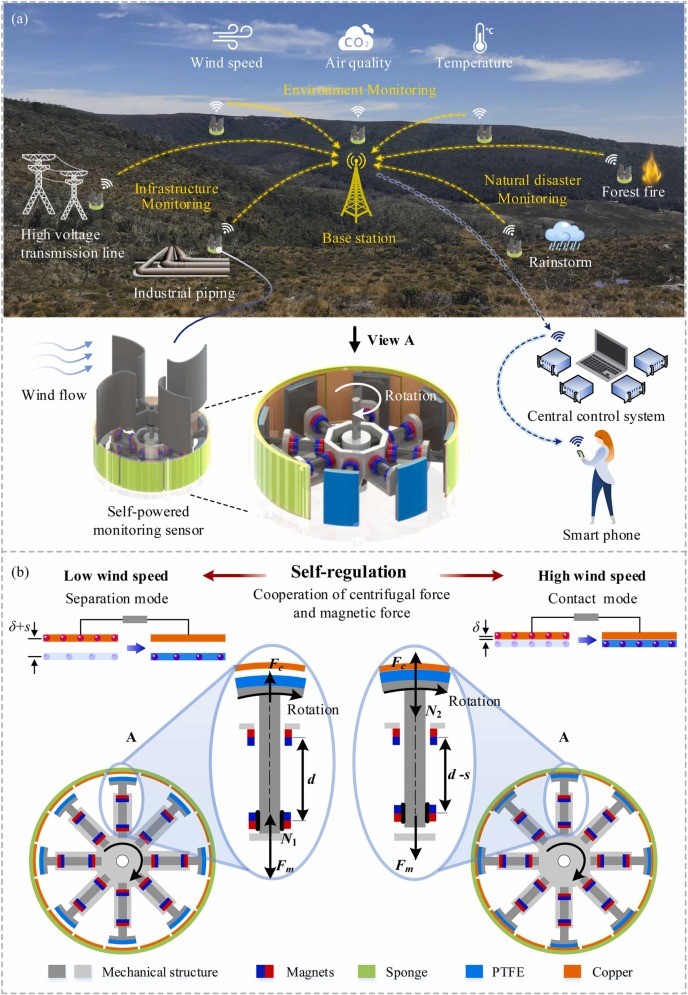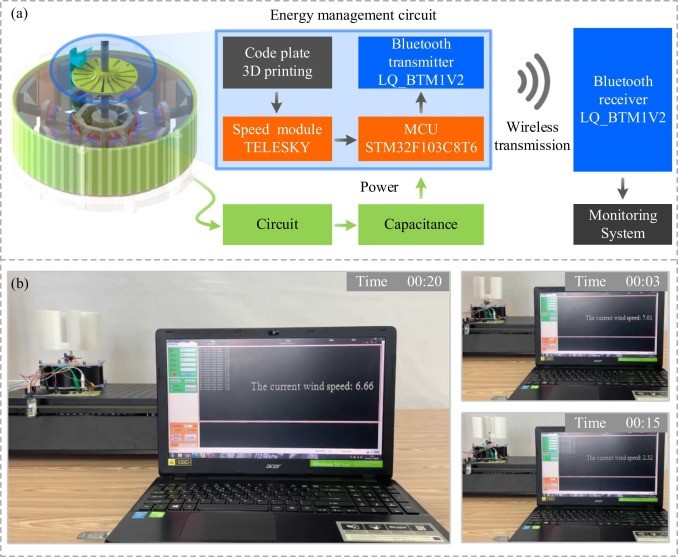
News

News
Recently, the Institute of Vibration, Shock and Noise (IVSN) in School of Mechanical Engineering, Shanghai Jiao Tong University published a research paper entitled “A self-regulation strategy for triboelectric nanogenerator and self-powered wind-speed sensor” in the journal Nano Energy. A self-regulation strategy is proposed to make the TENG wind harvester adjust its working mode adaptively according to the change of wind speed, improve equipment performance and service life significantly, and realize self-powered natural wind speed measurement. Dr. Hongxiang Zou and Dr. Linchuan Zhao are the joint first authors, and Professor Wenming Zhang is the corresponding author.

Figure 1 Design and working principle

Figure 2 Natural wind environment experiment

Figure 3 Self-powered wind speed measurement sensor
Small wind harvesting can be integrated with sensors for self-powered environmental ecological monitoring, climate monitoring, natural disaster monitoring and on-site infrastructure monitoring, which is of great importance for protecting and improving the living environment of human beings. However, the randomness and irregularity of wind seriously limit the application of wind energy harvesting and self-powered sensing technology. In this paper, a self-regulation strategy for triboelectric nanogenerator (TENG-SS) is proposed and a self-powered wind-speed sensor is achieved. By rationally designing the centrifugal and nonlinear magnetic forces, the separation and contact degrees of the functional materials of TENG can be adjusted automatically for different wind speeds. When the wind speed is low, the aerodynamic force is small, and the frictional resistance is also small due to self-regulation, the device is easy to start, and the wear is small; at high wind speed, the aerodynamic force overcomes greater frictional resistance to generate more electricity. Based on the working principle of TENG-SS, a dynamic model is established and verified experimentally, and the influence of the key parameters on the performance of the TENG-SS is analyzed. Furthermore, the prototypes of TENG with and without the self-regulation strategy are compared in a natural wind environment for 21,600 s, which proves that the proposed TENG-SS exhibits better performance and robustness. The proposed TENG-SS is used for self-powered wind speed measurements and wireless information transmission. This study provides a new perspective for improving the performance of TENG in the natural environment through self-regulation strategy.
Paper Link: https://doi.org/10.1016/j.nanoen.2022.106990

Shanghai Jiao Tong University
Address: 800 Dongchuan Road, Shanghai
200240